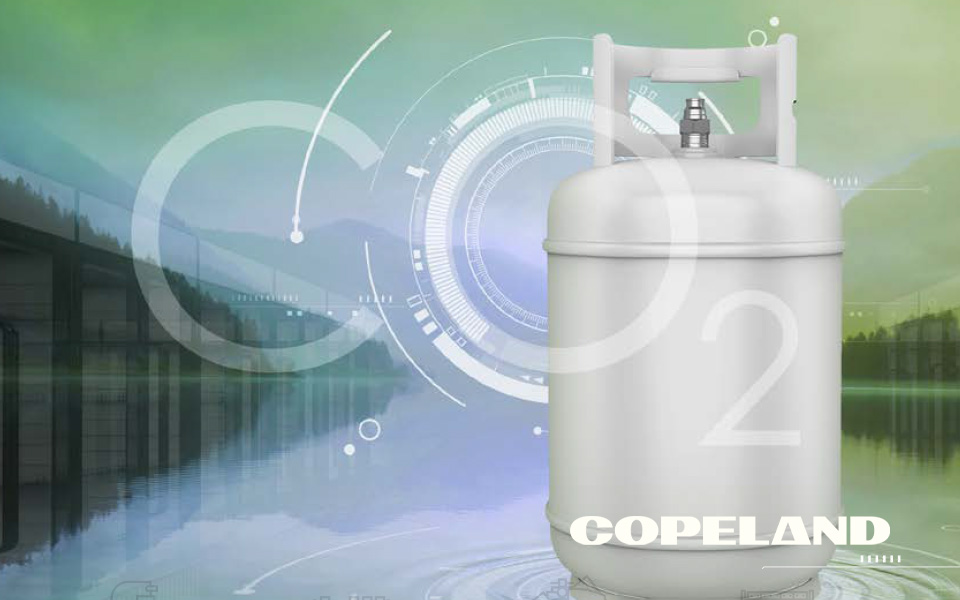*On June 1, 2023 Emerson’s Climate Technologies business became a new standalone company – Copeland. Though our name has changed, we are building on more than a century of HVACR innovation and industry leadership, and Copeland continues to offer the same products, industry stewardship, and learning opportunities you’ve grown to trust. Information found on this webpage posted before June 1, 2023 may contain our old name or branding, but you can be at ease knowing it was created with the knowledge and expertise of Copeland.
Adoption of CO2 refrigeration technologies is on the rise in U.S. food retail markets. Some early adopters have already successfully implemented CO2 in new stores; others are actively exploring CO2 in field trials. As regulatory dynamics and sustainability targets continue to reshape the refrigerant landscape, CO2 is set to play a significant role in future refrigeration strategies. Because retailers and their service technicians may have little hands-on knowledge of CO2, many have developed unfounded reservations about operating or servicing CO2 systems. This blog will explore — and more importantly, dispel — five common myths about CO2 refrigeration.

As someone who frequently participates in CO2 training and industry stewardship activities, I often find myself answering questions about CO2 or addressing retailers’ concerns:
- Are CO2 systems efficient?
- What about the refrigerant’s (R-744) high pressures?
- How long will it take to start up a new system?
- How will I get replacement parts?
- Who will service my CO2 system?
- Will it cost more than what I’m used to?
Although these are all valid concerns, typically they are based on negative misperceptions and a basic lack of education and/or familiarity with CO2.
Let’s look at each of these concerns individually and address them from a more factual and experiential perspective.
Myth 1: CO2 is only energy-efficient in cooler climates.
Although it’s true that the first CO2 refrigeration systems were deployed in cooler climates, system technologies have since matured to the point where original equipment manufacturers (OEMs) are applying specific design optimization techniques designed to improve energy efficiencies in a variety of climate zones. Copeland recently completed a CO2 climate study that measured the relative efficiency of these techniques in various temperature and humidity zones — clearly demonstrating that energy efficiencies can be achieved in nearly every climate. We’re currently using this research to help end users to select ideal design optimization strategies for their climate zone and utility considerations.
Myth 2: CO2’s high pressures are difficult to manage and/or unsafe.
It’s true that R-744 has relatively higher operating pressures than legacy hydrofluorocarbon (HFC) refrigerants; but pressure management is an inherent operating factor of all refrigeration systems. R-744 is classified as an A1 refrigerant, which means it is non-toxic, non-flammable, and safe to use with the proper components, controls and system designs. Copeland and its OEM partners have developed CO2-rated system design strategies, controls and compression technologies which help ensure system safety. From startup and commissioning to normal operation and maintenance, our connected CO2 control networks automate the management of these high pressures in a variety of system conditions.
Myth 3: CO2 refrigeration systems are overly complex to commission, maintain and troubleshoot.
Like many modern refrigeration architectures, CO2 refrigeration relies on electronics for system management and control. The E3 supervisory control for CO2 applications is designed to integrate control networks and take the worry out of CO2 commissioning, maintenance and troubleshooting. CO2-specific control algorithms assist with system startup and automatically optimize performance, while advanced diagnostics provide insights into nearly every aspect of CO2 system operation. Smart alarms, advanced diagnostics and remote access accelerate and simplify troubleshooting — often without having to roll a truck.
Myth 4: U.S. wholesaler networks don’t support CO2 refrigeration systems.
Copeland’s wholesaler network is fully educated on our compression, system and case controls, high-pressure valves (HPVs), electronic expansion valves (EEVs) and essential components to make sure retailers have fast access to the parts they need — regardless of their installation location. Many OEMs are also making investments to provide CO2 training and ensure their equipment supply chains are prepared for increased adoption of CO2 refrigeration.
Myth 5: CO2 systems are more expensive than other refrigeration equipment.
In terms of total cost of ownership (TCO), CO2 refrigeration system technologies have matured to the point where they are trending toward parity with traditional direct expansion (DX) HFC systems. As the HFC phasedown accelerates, diminishing refrigerant supplies will continue to drive up HFC prices. Today, R-744 is readily available and approved for use by global governing bodies. Maximizing energy efficiencies by deploying a recommended system design optimization strategy — while leveraging system heat for hot water or other reclaim purposes — can further minimize system costs and help to lower an operator’s carbon footprint.
To learn more about Copeland’s integrated approach to CO2 compression, controls and system components, please visit our CO2 resource center.

8 proven strategies for rigorous cold chain management
Preparing for the approval and safe use of A2Ls in commercial refrigeration applications...
Protection for high-value shipments just got even better
We’re excited to announce the release of Copeland’s newest real-time tracker, the GO Real-Time...

Three proven strategies to prevent cargo theft
The over-the-road (OTR) transport industry is experiencing a surge in cargo thefts. As thieves...
